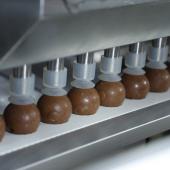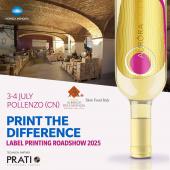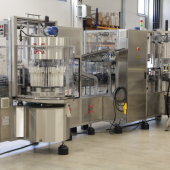Adhesives: a new R&D center
H.B. Fuller has opened its third world R&D center of excellence close to Hamburg. Huge, “green” and super-equipped, it enables all the tests to be carried out to help one find the “right” solution.
Last September H.B. Fuller officially inaugurated, in the north of Germany, the Lüneburg Adhesive Academy: its newest technical center of excellence, focal point for the multinational’s R&D, set up to favor collaboration with the users, with the objective of solving problems and tackling the need for rapidly and effectively developing new adhesives.
It is a cutting edge structure from various points of view - architectural, technological and administrative - that hosts state-of-the-art equipment and the best skills developed in the global network of H.B. Fuller experts, from various industrial sectors.

In its 2300 sqm of technical facilities, laboratories and offices, the Lüneburg Adhesive Academy comprises areas dedicated to packaging-, converting-, hygiene and durable assembly adhesives, and has been designed and equipped to carry out conducting tests and demonstrations, as well as to enable customer training.
Of the 20 million earmarked for the Lüneburg site, 6 are for the new R&D Center of Excellence, that thus confirms its commitment in the German region, reinforcing its links with the local community.
 Packaging, labels, converting
Packaging, labels, converting
Emblematic of the potential of the Lüneburg Adhesive Academy, the section dedicated to packaging solutions and fitted out to test all the formulations offered by the company, prior to the launch on the market, of a whole variety of materials: flexible films, plastic trays, glass containers, paper, folding cases, corrugated cardboard boxes….
H.B. Fuller’s experts tackle the problems and carry out the tests “with the customer’s eyes”, with the objective of providing, each and every time, the adhesive most suitable to the product and application (hence with due consideration of the markets, the conditions and temperature of use). The achievement of this objective is also made possible thanks to the close collaboration with OEMs and other industry partners, who, along with the exchange of information and customer know-how, gives the academy momentum to stay ahead of the game.
Equipment and expertise
The activities that take place in the Lüneburg Adhesive Academy are emblematic of the potential of the structure and its services.
• Label wash off test: checking the label grip to which water-based adhesives have been applied in conditions of even extreme humidity.
• Dilution Unit: automatic adhesive dilution system using two tanks, developed by H.B. Fuller to enable dispensing of adhesive with the optimal ratio between the water and dry part, and hence with ideal bonding characteristics. Also purchasable after factory trials.
• Free Flowing demo system: a spiral feed system for demonstration of hot melt adhesives with free flowing properties that prevent granules from sticking together, ensuring optimum application distribution and bonding.
• Film-to-print lamination: for hand assembled corrugated cardboard containers H.B. Fuller has developed Sesame© opening bands that facilitate damage-free opening, while the Close-Sesame™ allows for easy returns, without repacking or taping. It is ideal for e-commerce shipments.
• SAFT/PAFT oven (Shear/Peal adhesion Failure Test): in this laboratory equipment high temperatures of use are simulated to check the substrate grip in extreme conditions.
• Rheology for nonreactive adhesives: since substrates, especially in cardboard and corrugated cardboard, have evolved dramatically in terms of performance and composition with the adoption of new additives, the adhesive capacity of gluestuffs are verified along with the wettability and interactions with the different materials, including measurement of the surface tension of the same.
• Rheology for reactive adhesives: Checking of viscosity, sealing, mechanical strength and hardness of adhesives, as well as product characteristics for spray applications.

The Fruits of Research
Extremely active in terms of the development of new products, H.B. Fuller recently presented a series of formulations applied to packaging and labeling. Some examples:
- the water-based pressure sensitive adhesive named FulltakTM SE 8301. Formulated using proprietary polymer technology, it helps beverage producers efficiently remove PSA labels during the label wash-off process of returnable bottles. Importantly, it remains coated on the label, minimising contamination of the wash water;
- two water-based adhesives, containing a UV fluorescing agent, developed to help corrugators who are investing to achieve zero defects in their production lines. Ipacoll™ PWC 3107 I UV, the ideal choice for typical nozzle or jet applications, and Ipacoll WD 3930, designed for wheel-in-pot systems, are both specifically formulated with a UV indicator, ideally suited to work with Valco Melton’s ClearVision® Camera Inspection Systems;
- the hot melt adhesive Clean Melt™ 8610, designed to help make manufacturers’ “routine” packaging more competitive. Its clean-running properties are an aid to accurate and effective application, which in turn saves money by minimising production line downtime and rejects;
- the range of low application temperature hot melt adhesives (100 °C to 135 °C), offering the versatility to address practically all case and carton sealing applications.
It comprises seven products all featuring lower energy consumption (and lower CO2 emissions), greater worker safety and great performance. Worthy of note Advantra True™ LT 9340, containing over 40% forest-sourced materials.
Certified sustainability. The Adhesive Academy in Lüneburg, Germany, is LEED® certified to the Gold level. It is the first laboratory building in Germany that has achieved a Gold certification under version LEED v2009 NC (New Construction). LEED (acronym for Leadership in Energy and Environmental Design™) is a registered trademark of the U.S. Green Building Council® (USGBC®). The USGBC’s LEED green building program is the preeminent program for the design, construction, maintenance and operations of high-performance green buildings. It recognizes performance in sustainable site development, water efficiency, energy and atmosphere, materials and resources, indoor environmental quality and Innovation, and design process.
President and CEO Jim Owens underlines the importance of ‘connecting what matters’ in everyday life and e and the positive impact a green building can also have on the health of those who work in them.




















